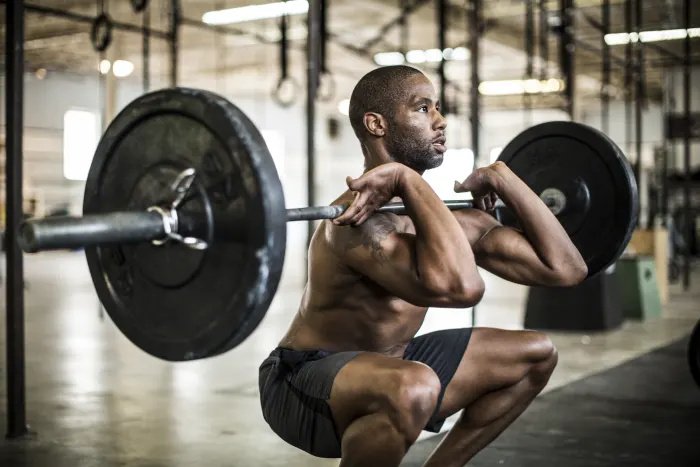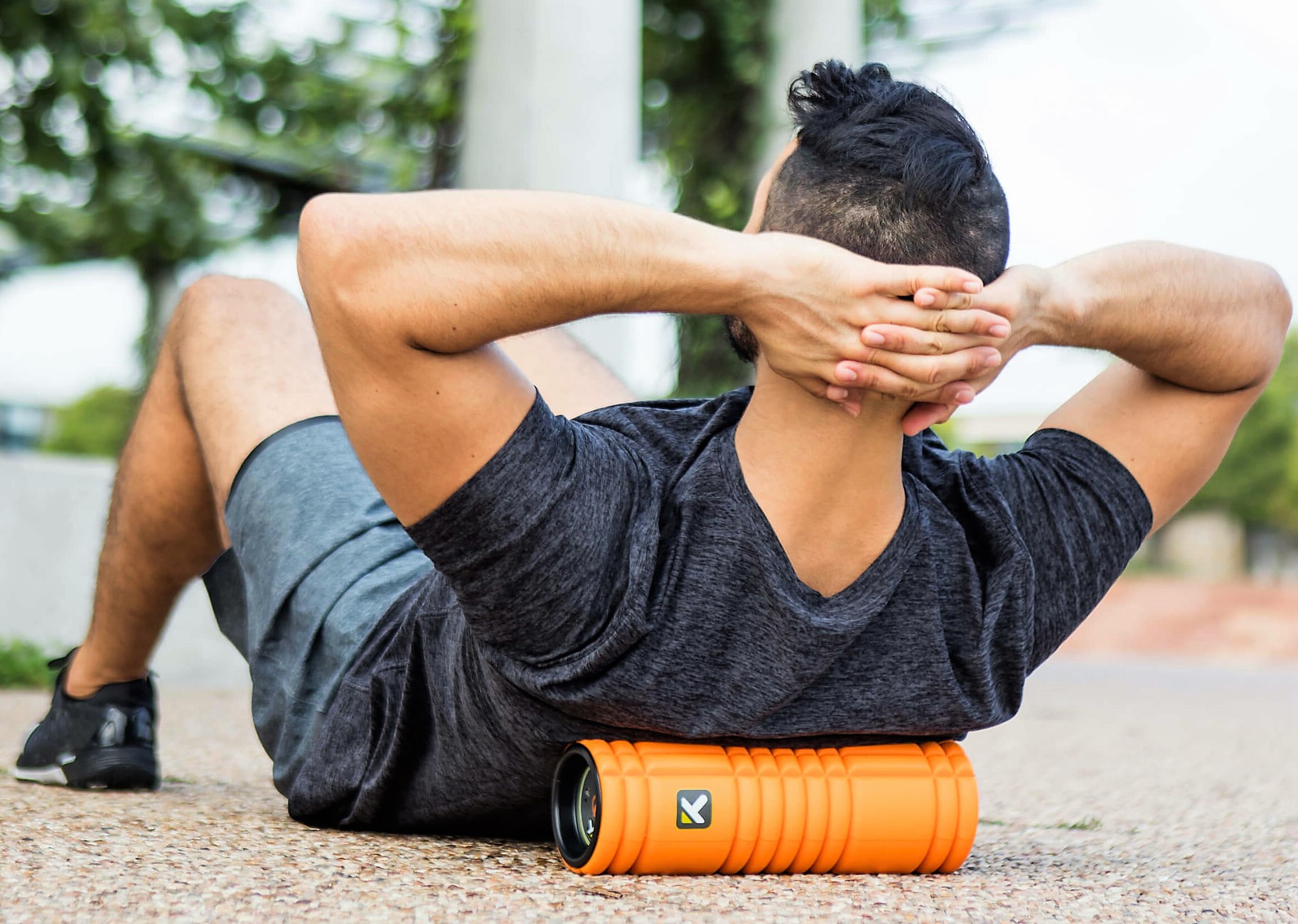Yes, you can get injuries from squatting. That doesn’t make squats bad for your knees, your back, or your body.
Just to set the record straight: any lift can injure you grievously, and whether or not you’ll get injured while lifting weights is a question of sex, previous medical history, training history, and a couple of other factors. Personally, I have only ever been injured twice in my current training history, and one of those two injuries happened during a squatting session.
I’m mentioning this just to establish that
I’ve gotten hurt, and to remind readers that this is still basically a blog,
and I am sort of writing this for myself. None of what I post here is meant to
act as medical advice or help you rehab your injuries. If you’re hurt or
suspect that you’re hurt, go see a professional. Don’t take the advice of an
internet stranger. But if you’re just here to see what kind of risks you might
be exposing yourself to by squatting heavy weight, read on.
My Injuries
In this case, I am counting injuries where
I have experienced pain severe enough that I have had to stop performing a
certain lift for at least two weeks or more (i.e. the pain was too much, even
after a warmup, to continue lifting weight).
In the case of one shoulder injury (which I suspect is a partial labrum tear), I have had to take about a month off all pressing exercises and generally ease back into heavy pressing after about two months of rehabilitative exercise to achieve a pain-free set at a serious load. This injury occurred after an audible pop during a set of triples, a PR set, on a day when my bench press felt a good 20-30% lighter than it should (and that got me a little too excited, obviously).
The other, more serious injury was damage to one of my knee ligaments that forced me to take a break from squatting for about three months, following more time spent doing self-imposed single-leg rehab until I slowly loaded the bar up again.
To this day, I’m not quite sure what caused
this injury, as I quite literally woke up with it. I had attempted a PR a week
prior (didn’t hit depth) and experienced some discomfort through the knee and
hamstring during an accessory exercise in the same week (Nordic ham curls,
which I haven’t attempted since), so I can’t pinpoint the cause but suspect
it’s somewhere between the two.
Not a Conclusive Source, Folks
The information I’m using to talk about potential injuries in the squat is sourced from the internet, and I’ll refrain from trying to talk about specific likelihoods and quantifiable risk factors. I will talk about the many ways in which you can get hurt squatting, as an opportunity to help newcomers and intermediate lifters learn more (or remind themselves) on how to squat safely, but I won’t try to tell you exactly what kind of injury occurs most often in the squat, as the data for that information is rather scarce.
What I can assume is that certain factors make you far more prone to injury than others. The most important factor is a physical limitation (often caused by a previous injury, to begin with). For example, if a shoulder injury is limiting your range of motion, it may lead to another injury. If a knee injury is keeping you from hitting depth, it may lead to another injury.
Sex is also predictive of injury, with men
being more likely to get hurt, but it’s not that significant (the difference is
minor).
A final third consideration is training age, in that you’re far more likely to get hurt the longer you’ve been training. Most surprisingly, it seems that training styles aren’t predictive of injury – meaning you’re not necessarily more likely to get hurt by training at higher intensities or greater volume, at least based on research. Now, onto the shortlist of injuries from squatting.
Knee Injuries from Squatting
Again, I can’t say whether knee injuries are the most common type of injury during the squat. They are the most common type of lower-body injury in powerlifting (with the other two types being upper-body injuries and torso injuries), but you can hurt your upper body on a squat day, and deadlifts can be just as bad on your knees when executed terribly (as well as other parts of the body). I’d actually argue that it’s likely the lower back is the most common injury point in the squat, as well as the deadlift (although more likely the deadlift).
Nevertheless, knees are what most people think of first when talking about squats, so we’ll get to those first. The knee is a complicated joint, in that there’s the patella (a little bone disc that’s attached to the muscles of the thigh and the shin bone), the point where the tibia and the femur meet (the shinbone and thigh bone), and a lot of different ligaments in between these three points (the ACL, the PCL, the MCL, the LCL, and the lateral and medial meniscus).
The point of the knee is to allow flexion
from a 0-degree angle (knees locked out) to about 135 degrees at the deepest
point of flexion, depending on the amount of muscle and fat that’s in the way. There
are a bunch of muscles involved in flexing the knee, including the
gastrocnemius in your calves, the muscles of the hamstring (like the biceps
femoris) and the muscles of the quadriceps (the vastus medialis, intermedius,
lateralis, and rectus femoris).
Ideally, your knee should only extend and
fold, without having to extend from a folded position in an awkward way with a
lot of weight on it. Failing to stick to this basic rule (which involves
essentially allowing your knees to track right over your middle toes) causes a
tremendous amount of shearing force on the ligaments in the knee.
Think of these ligaments like a telephone
book, where outright pulling it apart while closed is tough, but tearing it in
half from the right angle is doable. Ligaments and tendons are tough tissues
made of collagen, which is incredibly resilient stuff, but the structure of
your ligaments and tendons only allow for a very specific type of motion –
shearing forces (ripping) can cause these ligaments and tendons to tear, while
extreme loads or improper warmup can cause them to rip off the bone or muscle
(causing a quad tear, for example).
In most cases, a knee injury in the squat
is caused by improper mechanics in the squat applying massive shearing forces to
one of the ligaments in the joint. Some knee valgus is to be expected under
maximum load (go watch any Chinese weightlifting training compilation), but it
shouldn’t occur regularly, especially with submaximal weight. Keep the knees
tracking over the toes regardless of where your toes are pointing (forward or
outward) and rotate your hips appropriately (with some external rotation to
engage the glutes and abductors properly.
Squat depth has zero or almost zero bearing on knee injury rates. Just squat as deep as you can, aim to improve how deep you can squat (by addressing limitations in your hips and/or ankles through stretching and squat shoes), and accept that your squat stance will generally be a matter of genetics (hip sockets matter). Squat frequency or load also doesn’t affect injury rates (unless you’re trying to load up 130% of your squat just for laughs or something). In fact, a study of both factors shows that deep squats trained properly will help keep your knees strong and healthy.
If you catch your knees buckling in the squat, know that there are many potential reasons for this. An obvious one for most people is lack of practice squatting, as well as lack of proper glute activation. Warm-up with clamshells and practice knee tracking on goblet squats, then try barbell squats again. Single-leg exercises like split squats and lunges also help you strengthen the muscles responsible for keeping the knee tracking properly in the normal squat.
Back Injuries from Squatting
Back injuries in the squat rarely occur under light loads, and can occur when the weight is way too heavy for two reasons:
- Weak thoracic extension,
causing you to buckle on the way up and round your upper and lower back, and; - Trying to hit depth you can’t
hit yet, causing significant lumbar rounding (a real buttwink).
The way our spine works is that it’s at its
healthiest under a heavy load when completely stiff and straight. Just like our
ligaments and tendons, the spine doesn’t like shearing forces, but these are
unavoidable in the squat and deadlift (as the torso must incline to properly
produce force through the quads and hips to finish both lifts).
The muscles in the back and core are responsible for keeping the spine stiff during this process to minimize the effects of the shearing forces on the discs between your vertebrae. These muscles include your rhomboids, lats, and especially your erectors. But poor mechanics can cause squatting injuries even more than a weak back. I’d bet that the most common cause for back rounding is, ostensibly, poor bracing.
Bracing is achieved by filling your
intraabdominal space with a ton of air and compressing it with the muscles in
your core (abs, obliques, diaphragm, everything). The pressure this creates
keeps the spine nice and straight.
This is sometimes also called the Valsalva
maneuver, although I’d argue it’s a little different. You’re not just trying to
exhale against a closed mouth and nose, but you’re specifically trying to bloat
your lower torso with air and push against that air as you lift. This is what
powerlifting belts are for, by the way, to help you press against the tough
material of the belt and get some physical feedback on how well you should be
bracing.
When you’re not bracing well (or when you’re too weak to keep your torso and spine stiff), flexion in the spine introduces far greater shearing forces, which may lead to a slipped disc. Picture the spine – a column of bone with collagen discs between each vertebra – and imagine what might happen if it’s bent a little, and then compressed really hard. One of those discs can slip.
Another disc-related problem is a ruptured or herniated disc, wherein injury or inflammation leads to leakage and swelling, which presses on the nerve roots around that part of the spine, leading to pain in the back radiating out into the arms, legs, and elsewhere. Sciatica is one example of radiating pain often caused by an inflamed disc.
Some back injuries may be caused by muscle strain, but most of them will be related to the spine. The lower back is particularly prone to injury. Remember to learn how to brace effectively and keep hammering that core and upper back with useful accessories like heavy rows, good mornings, planks, side planks, and a great little gem: paused breathing squats.
Wrist Injuries from Squatting
This one is rather simple, and the reason
you’ll see a lot of competitive powerlifters don wrist wraps when going for
their top sets or a competition lift: when positioning the bar on the back, you
want to create as much of an upper back shelf as possible. To do so, you have
to remain incredibly tight in the back throughout the range of motion. Part of
that means pulling your shoulder blades together and bringing your elbows as
close and down as possible.
This causes your entire upper back to get really rigid and helps you safely stay stiff under heavy loads. But it also places your forearms in a rather precarious position where you need to rely on them to keep the bar steady on your back throughout the lift. This isn’t much of a problem with lighter weights, but heavier and heavier weight can lead to wrist strain and sprains. There isn’t really a way to train around this, as you want to maintain maximum tightness to avoid injury. Instead, wrapping your wrists can help provide the extra support to keep them injury-free.
The entirety of the load shouldn’t rest
squarely on your awkwardly positioned wrists and forearms, of course. Remember
to produce as much tightness throughout the upper back as you can (retract and
depress, like in the bench press). A fatigued back can lead to more load on the
wrist (and elbow), so consider switching to high bar when you’ve got more
volume to get through and your back is fried.
If you’re experiencing pain in the wrists
during the full bar contact front squat (basically a front squat where you’re
gripping the bar as you should), then part of that could be wrist flexibility,
but a greater part of that is a matter of:
- Poor thoracic strength (upper
back rounding) - Poor ankle mobility (meaning
your torso needs to incline further) - Poor front rack mobility
(struggling to keep the elbows up, tight triceps)
Address these issues through more frequent
front squatting, squat shoes, and mobility exercises, and your wrist pain will probably
greatly diminish or disappear.
Hip Injuries from Squatting
If we’re analyzing the squat from the bottom of the hole up into a full lockout, we can watch as a person’s quads, glutes, and hips all fire in quick succession and harmony to achieve the full squat. The glutes and quads do a big portion of work early on, before depleting, which is why a lot of max lifts you can watch a lifter’s hips shoot back and their torso incline as the load shifts onto their hamstrings and hips before they shift right back into an upright position to finish.
It’s during that sticking point where the
weight causes the body to shift from pushing with the legs to trying to extend
with the hips where a ton of weight is being moved onto the hips. It’s no
wonder then that you can injure yourself with poor mobility or poor stance
choice, poor strength, or poor technique. The most common injuries in the hips
occur in the form of adductor pain (the inner thigh muscle responsible for
closing your legs) and iliopsoas and sacroiliac pain.
There are way too many problems to address
properly here, and there aren’t too many general solutions. One idea is to try
and dial in your ideal squat stance by lying back and having someone take your
leg and scrape your hip socket with your femur until you both figure out where
your knees and feet should be for the ideal, deepest squat without any hip
pain. Some people try to squat too wide or too narrow and end up pinching and
irritating muscles and tendons that don’t like to be irritated.
Warming up the glutes and core with planks and bridges/hip thrusts/banded clamshells before every squat and deadlift session can also help avoid placing too much load or improper loading on the hips, thus avoiding squatting injuries. Similarly, learning to cue the squat properly to use the quads to their fullest (and making sure those bad boys are as strong as they should be with direct quad work) can help you take the load off the hips in the squat, especially if you find yourself shooting back often and early.
Shoulder Injuries from Squatting
This one is typically caused by mobility issues from rounded shoulders. Rounded shoulders (or slouching) are the typical telltale sign of a beginner lifter, and it’s the kind of thing that needs to be addressed early on in one’s lifting career with plenty of stretching and foam rolling on off days, proper upper back activation during warmups (scapular retraction, lots of light and heavy pulls, face pulls and direct rear deltoid work), and more practice under the bar. That means more squats. A lot more squats.
If you’ve gotten previous shoulder injuries, then trying to squat can actively aggravate those injuries, especially if you have a massively reduced range of motion. You have two options – opt for a super-wide squat grip or switch to a safety squat bar. Not much to say here in terms of improving technique. Apply the same principles as mentioned in the wrist and back portions of the article (proper bracing and creating that upper back shelf), or switch to an SSB if that doesn’t work for your pain.
Squats can be scary if you’ve been told they’re bad for your knees for as long as you can remember, but they’re really not that bad, and squatting injuries aren’t that common. Lifting weights also does not increase your risk of joint pain. You can get hurt doing them, but remember, people pull a muscle getting out of bed sometimes. Squatting regularly and intelligently can help you build a more injury-resilient body. On the other hand, being a powerlifter can mean getting more than just one injury under your belt (sometimes literally). Managing that risk properly (and not letting it scare you off if you really love the sport) is important.
Want to lift heavier and avoid injuries? 💪🔥
Download our FREE '5-Minute Warm-Up Routine for Maximum Lifting Performance' and get primed for every workout!
Click below to grab your copy now!👇
👉 Download the Free Guide




